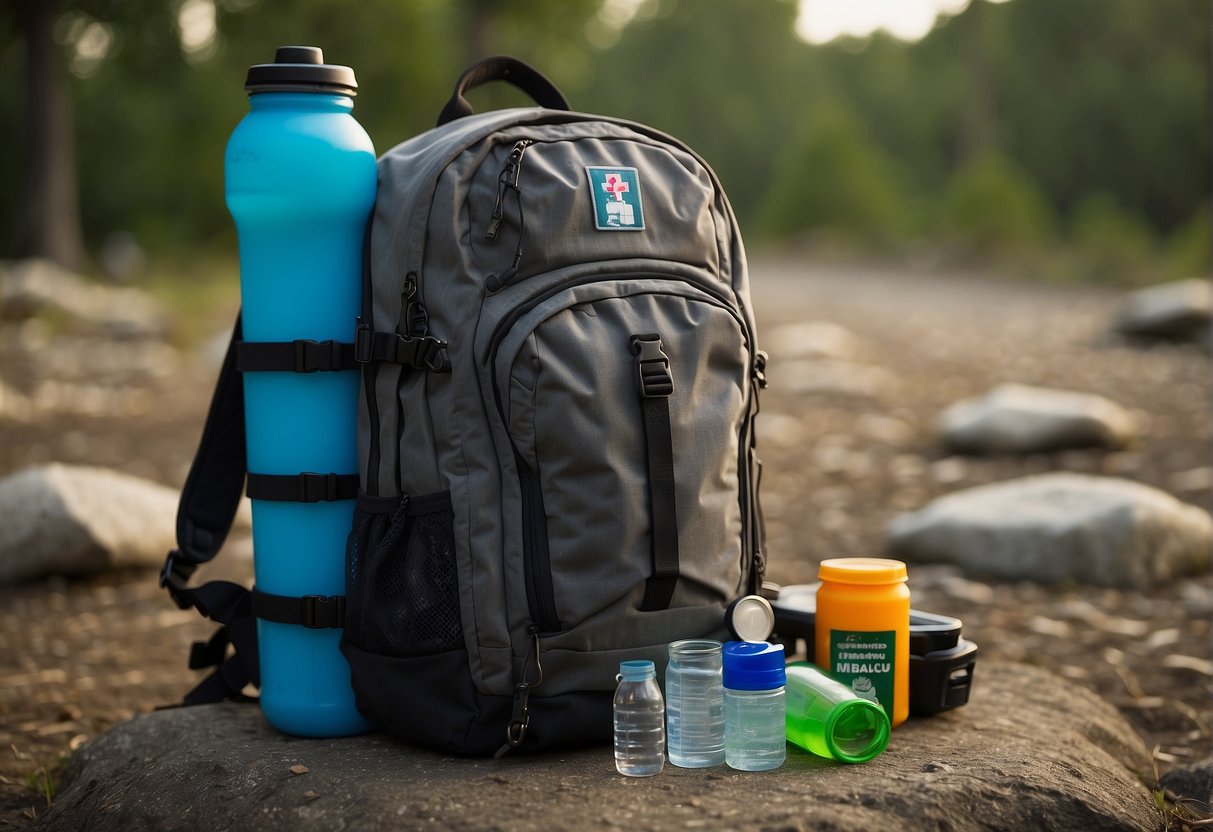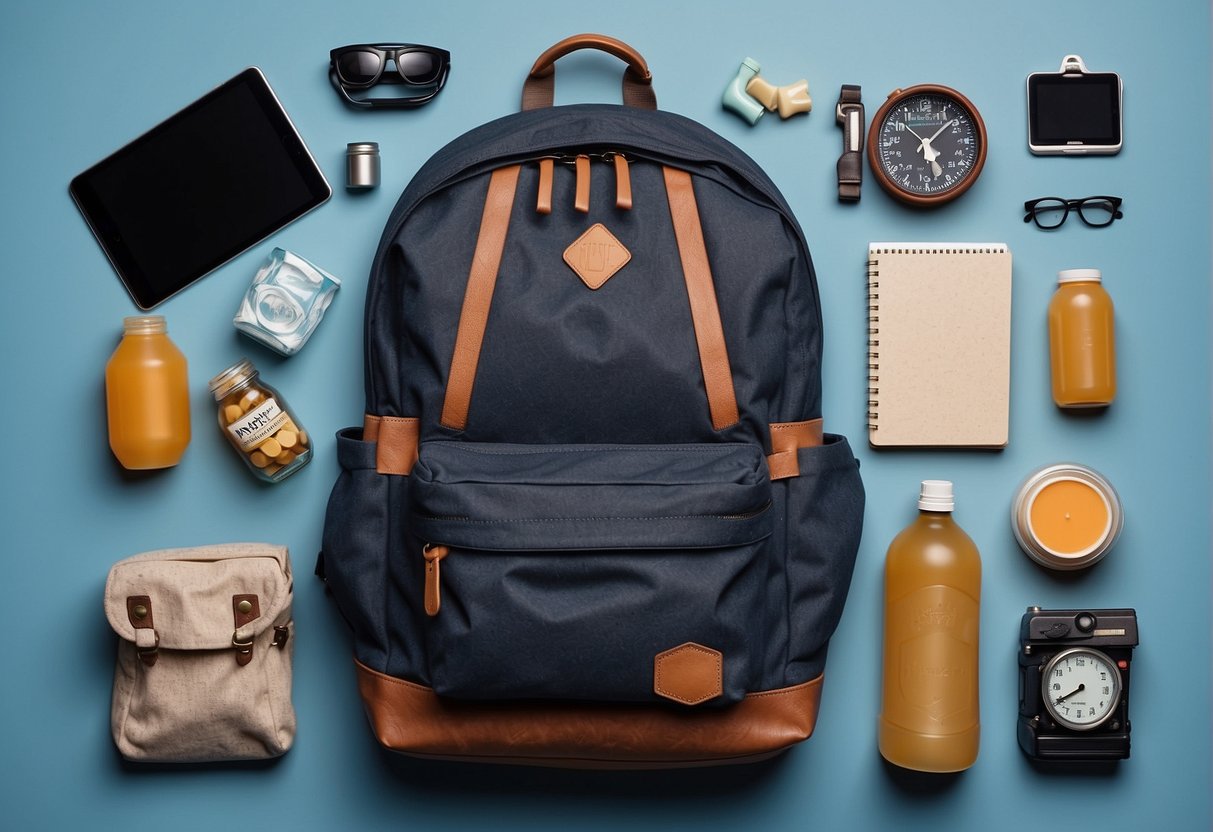Choosing the right items for your backpack can significantly impact your comfort, convenience, and productivity. Whether embarking on a trek across mountains, heading into a day of classes, or commuting to the office, a well-packed backpack becomes a mobile base of operations. Key factors include the backpack’s design and fit, as a proper one ensures minimal strain and maximizes accessibility, while the contents should be tailored to the day’s needs.
When considering a packing list, prioritize items that uphold the fine balance between preparedness and overpacking. For outdoor activities such as backpacking and hiking, items should address survival, navigation, and safety. Conversely, everyday carriers for students and professionals might focus more on technological gadgets, notebooks, writing implements, and snacks. No matter the scenario, thoughtful packing ensures every item serves a purpose and contributes to the experience's success.
Table of Contents
- Backpack Features and Fit
- Essentials for Every Backpack
- Backpacking and Hiking Specifics
- Everyday Carry for Students and Professionals
- Adventure and Travel Packing
- Frequently Asked Questions
- What are the essential items to carry in an everyday backpack for optimum preparedness?
- Which supplies are indispensable for a middle school student's backpack?
- What are the must-have items for a primary school student's backpack?
- What should a college student definitely have in their backpack?
- What essentials should a girl include in her school bag?
Key Takeaways
- Selecting an ergonomically designed backpack can enhance comfort and convenience.
- Tailor the contents of your backpack to the day's specific activities and requirements.
- Consider a minimalistic approach to packing, focusing on multipurpose and essential items.
Backpack Features and Fit
When it comes to backpacks, specific design features, overall comfort, durability, and proper fit are crucial for the best experience during use. Knowing these aspects helps in choosing a backpack that caters to the individual’s needs, whether for daily commuting or extensive trekking.
Backpack Design and Capacity
Backpack designs vary from ultralight packs aimed at minimizing load, to larger, feature-rich models intended for extensive treks. Capacity is often measured in liters, indicating how much gear the backpack can carry. For instance, daypacks typically range from 15 to 30 liters, suitable for short trips, whereas multi-day backpacks can exceed 70 liters, ideal for longer expeditions with more gear. Selecting a design that balances between capacity and features, such as hydration system compatibility and sufficient compartments, becomes essential.
Comfort and Durability
Comfort is deeply influenced by the presence of padded shoulder straps, adjustable torso lengths, and ventilated back panels. Durability, on the other hand, hinges on the quality of materials used, like ripstop nylon or polyester, and the construction of high-stress areas. For hydration needs, many backpacks include built-in sleeves for water bladders or side pockets for water bottles, an aspect of comfort that doubles as a functional design.
Choosing the Right Backpack
It is important to select a backpack that aligns with the individual's body size and planned activities. This includes considering adjustable hip belts, torso length, and load distribution features for a proper fit. For instance, someone with a smaller frame would benefit from an adjustable, smaller-sized pack, similar to the Osprey Eja, ensuring the backpack fits snugly and distributes weight evenly. On the contrary, a larger individual may find packs with a wider torso range, like the Mountainsmith Apex 60, more comfortable and suitable.
Note: If you purchase through links on this page, we may earn commission at no additional cost to you.
Essentials for Every Backpack

When preparing for a trip, one's backpack is the lifeline, carrying critical items for survival and safety. The contents should reflect the traveler's needs, factoring in duration, environment, and personal requirements.
Hydration and Nutrition
- Water Bottles: A durable water bottle is indispensable for staying hydrated. For extended trips, having multiple bottles or a hydration system is advisable.
- Food and Snacks: High-energy, non-perishable food items and snacks like nuts and granola provide essential nutrients and are easy to carry.
- Compass and Map: A reliable compass coupled with a physical map of the area ensures one can navigate effectively, even when electronic devices fail.
- Headlamp: A headlamp provides hands-free illumination, crucial for moving in the dark or during emergencies.
Safety and Health
- First Aid Kit: A well-stocked first aid kit is a backpack essential for addressing minor injuries and health issues on the trail.
- Sunscreen: Regardless of the weather, sunscreen protects skin from harmful UV rays, preventing sunburn and long-term skin damage.
Backpacking and Hiking Specifics
When embarking on a backpacking or hiking trip, the gear you carry is critical to your comfort and safety. Selecting the right apparel and footwear, ensuring you have proper shelter and sleep systems, and carrying essential backpacking gear are the foundations of a well-prepared excursion.
Apparel and Footwear
For a successful hiking journey, the importance of wearing the right apparel cannot be overstated. Key clothing items include:
- Quick-dry Underwear and Socks: Essential for maintaining comfort and preventing blisters.
- Moisture-Wicking Shirt: To keep the skin dry and regulate body temperature.
- Hiking Pants or Shorts: Durable and quick-drying fabrics are crucial.
- Rain Jacket: A lightweight and packable jacket offers protection against sudden downpours.
Proper footwear is equally vital:
- Hiking Boots/Shoes: They should provide good traction and offer ankle support.
- Gaiters: Useful for additional protection against terrain and weather.
Shelter and Sleep
Your shelter items should be reliable:
- Tent: A well-constructed tent with durable tent poles can protect from the elements.
- Rainfly: Extra waterproofing for your tent is advisable for wet conditions.
For sleep, one requires:
- Sleeping Bag: Rated appropriately for the lowest temperatures expected.
- Sleeping Pad: Insulates and provides comfort from the ground.
Backpacking Gear
Equipping oneself with the right gear can make a significant difference:
- Backpack: A correctly fitted backpack with enough capacity is critical.
- Trekking Poles: They can reduce the impact on knees and improve balance.
- Gloves: For warmth and protection during colder hikes.
A comprehensive list of essentials catering to personal needs, considering weather and terrain, ensures a hiker's readiness for most scenarios.
Everyday Carry for Students and Professionals
When preparing a backpack for daily use, it's essential to include items that cater to productivity, convenience, and preparedness for unforeseen circumstances. EDC (Everyday Carry) for students and professionals typically encompasses technological accessories for connectivity, academic tools for learning, and personal items for comfort and emergency needs.
Technological Accessories
For the tech-savvy individual, a laptop is paramount, accompanied by both the laptop charger and phone charger to ensure all devices are powered throughout the day. Earbuds are a key component for both focused work sessions and relaxing during breaks. Additionally, a portable charger serves as a safety net for long days away from outlets.
- Laptop
- Laptop charger
- Phone charger
- Portable charger
- Earbuds
Academic Tools
The backbone of a student or professional's backpack consists of notebooks and a variety of writing implements like pens and pencils. Textbooks for college students, or specialized books for professionals, are indispensable. A scientific calculator is crucial for those in scientific or mathematical disciplines. It’s also wise to carry ID and extra cash as they are often required.
- Notebooks and textbooks
- Pens and pencils
- Scientific calculator
- ID and extra cash
Personal Items and Extras
Personal comfort and preparation items round off the list. Tissues, chapstick, and hand sanitizer support hygiene and health. For freshening up, consider carrying mints or gum, and a toothbrush. An umbrella guards against unexpected weather, while extra cash can cover miscellaneous expenses. Some may need a passport for identification or if international travel is a possibility.
- Tissues, chapstick, and hand sanitizer
- Mints, gum, and toothbrush
- Umbrella and extra cash
- Passport (if applicable)
Adventure and Travel Packing
When preparing for an outdoor excursion or travel adventure, packing effectively is crucial. The right equipment can prevent dehydration, protect against the elements, and ensure preparedness for unexpected situations.
Outdoor Adventure Gear
For those embarking on a day hike or scaling new heights, essential gear like a GPS device can prevent one from getting stranded. Packing sunglasses and a hat is vital to protect against harsh sunlight, and lip balm is a small yet important item to prevent chapped lips. Here's a quick list of must-haves:
- Sunglasses: To shield eyes from UV rays
- Hat: To provide shade and reduce sun exposure
- GPS: For navigation and safety
- First-Aid Kit: For treating minor injuries immediately
- Paracord and Duct Tape: For makeshift repairs and emergency situations
- Ice Axe and Crampons: For icy terrain
- Climbing Rope: For safety during climbs
Travel Necessities
Traveling can throw unexpected challenges, so one's backpack should include items for comfort and convenience. A water filter ensures access to clean drinking water, thus preventing dehydration. Packing cubes help organize the backpack, and compression straps secure items in place. Essential travel items include:
- Deodorant: Maintaining freshness during long trips
- Extra Cash: For emergencies where digital payment isn't an option
- Travel Essentials: Such as hygiene products like tampons and painkillers
- Adventure Gear: Depending on the activity, items like a stove for cooking
Emergency Preparedness
Regardless of the destination, emergencies can arise. A first-aid kit is non-negotiable for handling injuries. Carrying extra cash can be a lifeline if digital systems fail or one is outside of network areas. Key items for being prepared include:
- Bear Canister: To safely store food away from wildlife
- Water Filter: To have a reliable source of hydration
- Emergency Snacks: Like trail mix, that provide quick energy
- Backup Supplies: Such as a headlamp, extra batteries, and a multi-tool
Packing for adventure and travel requires one to carefully consider both the expected and the unexpected. With these lists, adventurers can tackle their journeys with confidence, knowing they have the essentials to handle diverse situations.
Frequently Asked Questions

Whether preparing for school, work, or everyday errands, knowing what essentials to pack can make one's day-to-day life more efficient and prepared for unforeseen needs.
What are the essential items to carry in an everyday backpack for optimum preparedness?
One should include a reusable water bottle to stay hydrated, a compact umbrella for unexpected weather changes, portable chargers to keep devices powered, and a multi-tool for minor repairs or emergencies.
Which supplies are indispensable for a middle school student's backpack?
Middle school students should always carry writing utensils, a notebook or binder, a calculator for math classes, a book for reading time, and a school planner to track homework and activities.
What are the must-have items for a primary school student's backpack?
A primary school student's backpack should include pencils, crayons, a glue stick, safety scissors, and a snack in case they get hungry before lunchtime.
What should a college student definitely have in their backpack?
For college students, a laptop or tablet, notebooks, textbooks for study sessions, writing utensils, and a water bottle are essential. They may also need a scientific calculator and USB drives for class materials.
What essentials should a girl include in her school bag?
Girls should consider including personal hygiene products, a hairbrush or hair ties for grooming, a small notebook for jotting down thoughts, and a light cardigan in case of a chilly classroom.
